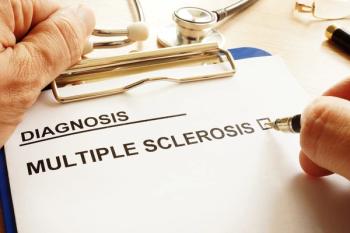
The Probability of Early Prediction in MS Disease Activity
Predictors of long-term disability and treatment failure in multiple sclerosis were discussed at a platform presentation during the 29th Congress European Committee for Treatment and Research in Multiple Sclerosis (ECTRIMS). In the first presentation discussed here, Marzia Romeo, MD, San Raffaele Hospital, Milan, Italy, shared findings from an observational study examining the viability of early prediction of long-term treatment failure in relapsing remitting multiple sclerosis (RRMS) patients treated with disease-modifying treatments (DMT).
Predictors of long-term disability and treatment failure in multiple sclerosis were discussed at a platform presentation during the 29th Congress European Committee for Treatment and Research in Multiple Sclerosis (ECTRIMS). In the first presentation discussed here, Marzia Romeo, MD, San Raffaele Hospital, Milan, Italy, shared findings from an observational study examining the viability of early prediction of long-term treatment failure in relapsing remitting multiple sclerosis (RRMS) patients treated with disease-modifying treatments (DMT). In the second, Alberto Ascherio, MD, DrPH, professor of epidemiology and nutrition at the Harvard School of Public Health, professor of medicine at the Harvard Medical School, looked at using measurements of vitamin D levels early in the course of MS to predict long-term disability progression.
In the study by Dr Romeo et al, the aim was to find whether early MRI activity and clinical activity, with first-line therapy, is an effective predictor of long-term treatment failure in RRMS patients. Dr Romeo and her team employed a retrospective, single-center, 8-year follow-up study conducted in a real-world clinical setting, and observed the long-term clinical outcome of RRMS patients “who started treatment with different formulation of interferon-beta (IFNB) 1a or 1b or glatiramer acetate (GA)… before 2005 and with at least 2 years of follow up.”
The results showed that long-term treatment failure is associated with the combined effect of early clinical and brain MRI activity, though this association identifies a small group of non-responders. Further results showed that higher probability of long-term treatment failure in patients treated with DMT is linked with older age, higher disability, and MRI activity at beginning of DMT. Also, RRMS patients who are disease-free the first 2 years of treatment present a low rate of treatment failure in the long-run. The study confirms the ability to predict worsening disability progression using brain MRI, and supports the use of DMT in the presence of MRI activity.
In a similar study, Dr Ascherio et al looked at vitamin D as a predictor of MS activity and progression. For this study, patients were pulled from BENEFIT, “a randomized trial originally designed to evaluate the impact of early versus delayed interferon beta-1b (IFNB-1b) treatment in patients with a first event suggestive of MS.” Serum concentrations of 25-hydroxyvitamin D (25[OH]D), a vitamin D marker, were measured at baseline, 6, 12, and 24 months. Of these 468 patients, 465 had at least one measurement of 25(OH)D, and 334 patients had measurements taken at 6 and 12 months.
Results of the study showed that over 5 years of follow up, higher concentrations of 25(OH)D early in the course of MS activity effectively predicted a lower degree of MS activity, slower progression, MRI lesion load, and brain atrophy. Ascherio addressed limitations in the generalizability of the study, however, noting that further investigation is needed to measure the effectiveness of vitamin D level-based prediction with other prognostic factors such as race, patients later in the course of MS, patients with progressive MS, and the combination of 25(OH)D levels with drugs other than INF-1b. Nonetheless, the effectiveness of using 25(OH)D levels to predict long-term disability progression is conclusive.
Newsletter
Stay ahead of policy, cost, and value—subscribe to AJMC for expert insights at the intersection of clinical care and health economics.












































